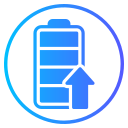Safety First: Electrolytes, Separators, and Fire Mitigation
New solvent blends and salt systems aim to suppress flammability while maintaining ionic conductivity. Additives tune the interphase to stay robust at higher voltages. In stress tests, cells with tailored electrolyte packages showed delayed venting and cooler external shell temperatures, buying precious seconds when anomalies occur.
Safety First: Electrolytes, Separators, and Fire Mitigation
Ceramic coatings reinforce separators, resisting pore shrinkage at high heat. Some designs include a thermal shutdown function that gently chokes ion flow before things escalate. A pack engineer likened it to a seatbelt that quietly clicks at the first sign of danger, often unnoticed by drivers yet crucially effective.




